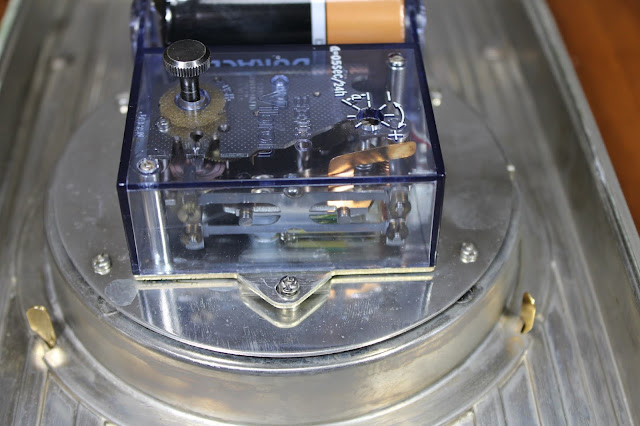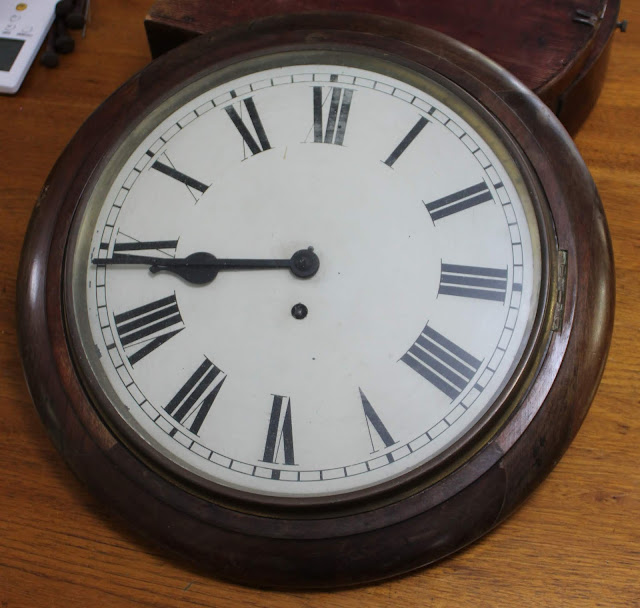Gensign Pendulum Master Clock
Significance
Pendulum master clocks were an accurate central time reference for large organisations, factories, government, railways, telephone companies and the like. The master clock generates electrical impulses to drive slave clocks so that all show the same time. Master clocks use a large pendulum to keep accurate time, around a few seconds a week. The pendulum is maintained by electromagnets in my clock, but some had mechanical movements with a spring or weight which was rewound electrically. Master clocks were often battery-backed.Master clocks were used for time standards in power stations. The frequency of the mains is kept very accurate over the longer term to allow simple synchronous clocks to be used. These master clocks have two faces, the accurate master clock time and the varying synchronous clock time. Any difference is eliminated by changing the generator speed slightly when under lighter loads.
Pendulum master clocks were used from the early 1900s but were replaced by quartz or other more accurate clocks through the 1960s and 70s.
Description
The pendulum master clocks are a little shorter than a domestic long-case clock and have a long and heavy pendulum. The pendulum swing is maintained by a switched electromagnet. As the pendulum decreases its swing due to friction, a switch is activated to power an electromagnet to power the pendulum. An escapement is used to with the pendulum to turn a 30?? tooth wheel. It, in turn, uses a mercury switch to pulse the master clock's impulse clock and the slave clocks (usually via a relay to reduce the current through master clock).This clock uses 20 V DC, provided by a small AC power supply. It is common to have battery-backed power for master clocks.
Gensign is a trademark and subsidiary of General Signal and Time Systems Ltd. (GENeral SIGNal) with a plate on my clock. Gensign did not make movements, rather sourcing them from other makers, in this case, the Magneta Time Company. Magneta made both master clock systems as well as movements and other components for other companies.
The Hipp Toggle switch was used in many English master clocks. It is an ingenious but simple switch to power the electromagnet drive as the amplitude of the pendulum declines from friction. Detailed photos are after my clock photos. It was used in the GPO Clock No 36 master clocks. http://www.hvtesla.com/masters/po36_toggle.html)
Notes
Other UK makers of master clocks included Synchronome and Gents. USA makers??https://clockdoc.org/?aid=316 Gensign clock like mine. clockdoc.org specialises in electric clocks.
https://clockdoc.org/default.aspx?aid=151 Magneta Clock Co- Makers of the movement.
http://www.hvtesla.com/masters/index.html UK electric master clock site.
http://electric-clocks.com/ Electric clock site.
 |
| The pendulum bob, about 5 kg and the 20 V DC power supply. The wood blocks to the left are to hold the pendulum when the clock is being moved. |
 |
| The impulse slave clock. |
 |
| The toggle catches in a slot on the top of the agate block and closes the contact when the toggle is near vertical. The switch syncronises an electromagnet with the pendulum's swing. |









Comments
Post a Comment